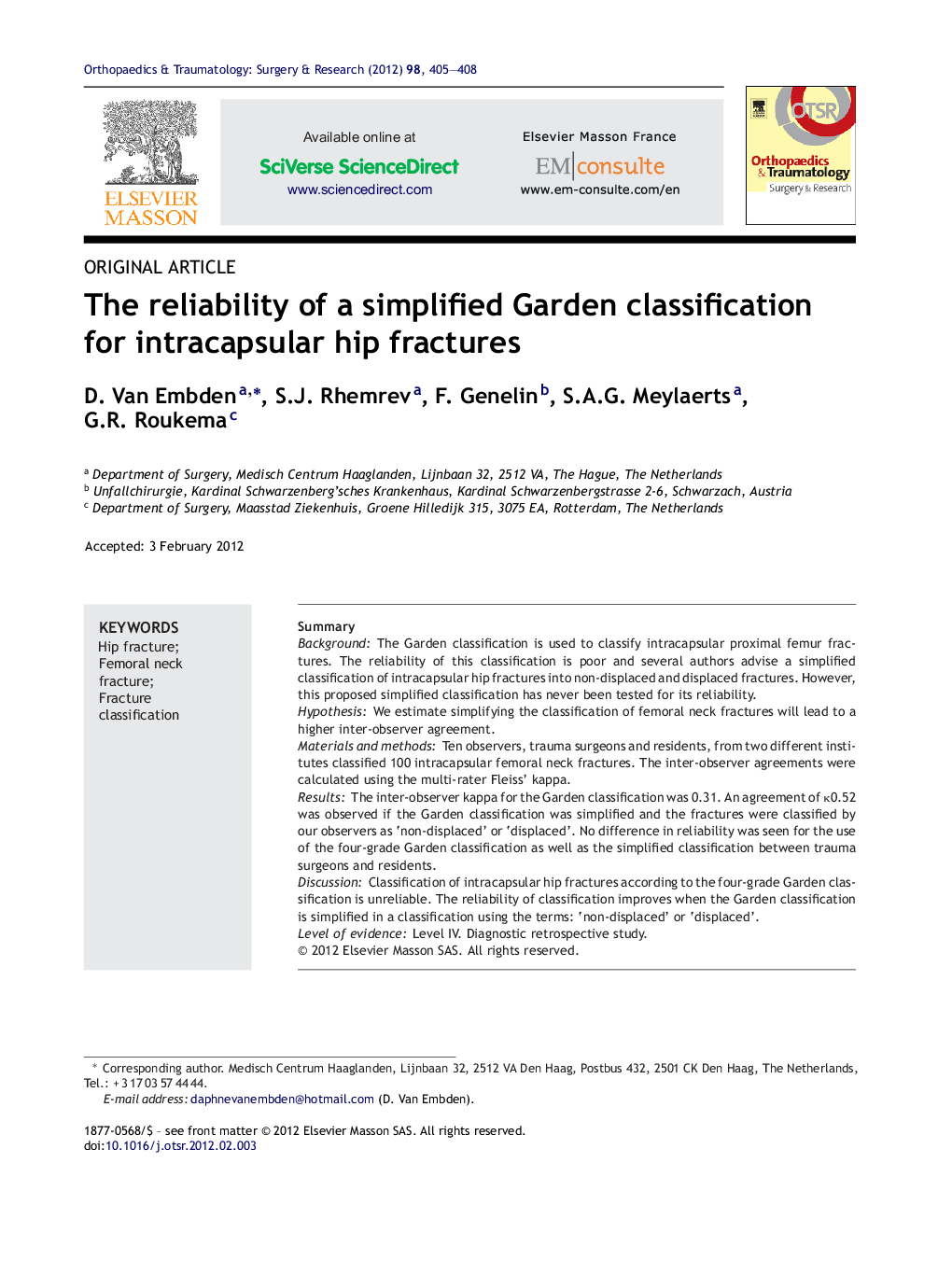| Article ID | Journal | Published Year | Pages | File Type |
|---|---|---|---|---|
| 4081823 | Orthopaedics & Traumatology: Surgery & Research | 2012 | 4 Pages |
SummaryBackgroundThe Garden classification is used to classify intracapsular proximal femur fractures. The reliability of this classification is poor and several authors advise a simplified classification of intracapsular hip fractures into non-displaced and displaced fractures. However, this proposed simplified classification has never been tested for its reliability.HypothesisWe estimate simplifying the classification of femoral neck fractures will lead to a higher inter-observer agreement.Materials and methodsTen observers, trauma surgeons and residents, from two different institutes classified 100 intracapsular femoral neck fractures. The inter-observer agreements were calculated using the multi-rater Fleiss’ kappa.ResultsThe inter-observer kappa for the Garden classification was 0.31. An agreement of κ0.52 was observed if the Garden classification was simplified and the fractures were classified by our observers as ‘non-displaced’ or ‘displaced’. No difference in reliability was seen for the use of the four-grade Garden classification as well as the simplified classification between trauma surgeons and residents.DiscussionClassification of intracapsular hip fractures according to the four-grade Garden classification is unreliable. The reliability of classification improves when the Garden classification is simplified in a classification using the terms: ‘non-displaced’ or ‘displaced’.Level of evidenceLevel IV. Diagnostic retrospective study.
